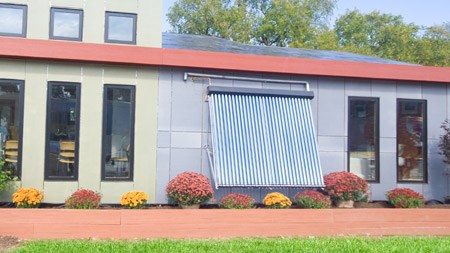The daily carbon footprint of an energy guzzling consumer society is dominated by the time we spend indoors.
Since there’s little escaping the perils of utility bills in the short-term, we might as well opt for energy efficiency as a long-term solution. As consumers, we stand to benefit from buying into new and modern technology when replacing old products – from buildings to appliances.
When looking around at modern architectural design and building techniques, they speak of creating optimal energy efficiency for building occupants. A good example is Pam Golding’s new office in Kenilworth Cape Town, of which Dr Andrew Goldings says: “Pam Golding on Main is designed to incorporate a number of green building features, with a focus on energy and water efficiency in order to reduce operating costs and improve the working environment for tenants, shoppers and visitors.”
Then there is the corporate commitment to environmental sustainability that feeds down to employees of large companies. A recent visit to First National Bank’s new Cape Town head office illustrated energy efficiency up the 34 floors of Africa’s first Green Star high-rise building.
Greater environmental awareness of the company’s 1 300 employees is taking place through its consolidation of 22 different buildings around the Cape Town metropole into two major buildings.
Energy efficient features abound, which, although initially costly, can be applied to residential buildings: double glazing for light and reduction in heat load, grey water recycling, motion sensors for all lights and air-conditioners, single energy centres, and more. Modern kitchen technology in staff cafeterias illustrates how families can achieve reduced consumption through energy saving appliances as part of long term financial and environmental solutions.
This emphasised that, when buying new appliances, it is worth considering researching the benefits of modern technology, such as washing machines with cold and shorter cycles, convection ovens, inversion technology for cooking tops, modern television screens … all of which facilitate massive energy reductions.
Conventional ovens, which, traditionally rack up the power bills, can be replaced by a wide range of both gas and convection ovens, as well as microwave convection combinations. Although gas remains the cheaper option, convection technology allows greater heating efficiency with lower temperatures, which reduces cooking time.
LG appliances provides a wealth of energy efficiency advice, such as ColdWash washing machines that use cold water but give the same cleaning performance as washing in warm water. Additional efficiency, as seen in the LG 6Motion, is facilitated through technology powered by the Direct Drive Motor that sends power directly from the motor to the drum for increased efficiency and also extends the operating life of the machine.
Older television screens are often under estimated for inefficient energy use, whereas modern flat-panel HDTVs screen designs allow standby and active modes, using approximately 40% less energy than standard TVs. Additional features such as power saving modes and mechanical power-off switches eliminate standby power while not in use.
Talking of screens and computers, it is thanks to modern technology that we can access a vast database of online information on how to achieve optimum energy efficiency and a sustainable lifestyle.



